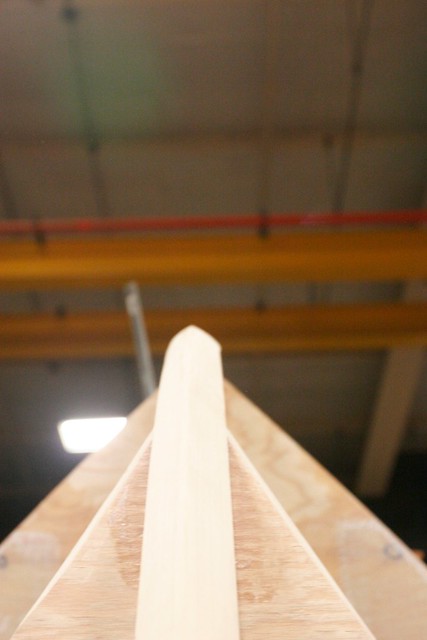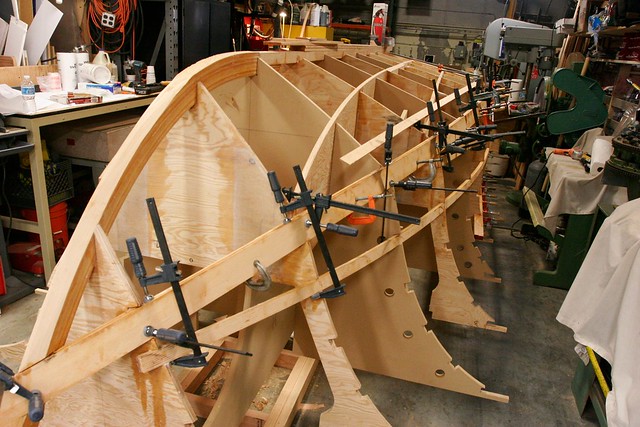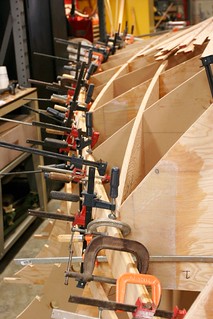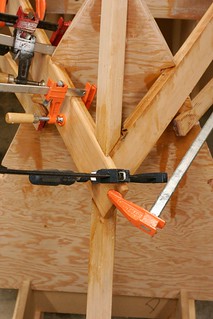I’ll start with a nod to my father’s suggestion, buried somewhere down in the comments, that I be a bit better about explaining arcane boat building terminology when I employ it. A boat such as this one has “hard chines.” The chine is the intersection between the sides of the boat, and the bottom of the boat. In the forward (front) areas this is a barely perceptible transition, but as we move aft (back) it quickly becomes a sharp angle. That sharp angle is what’s implied by the term “hard chine.”
When we plank (skin) the hull we will use one set of planks for the sides and one for the bottom. These intersect at the chine, and they need a fairly stout piece of framing behind the intersection to support them and bind them together. These are known – presumably for reasons dating back to when they were comprised of actual logs of an appropriate shape – as “chine logs.”
The chine log on the KH18 starts at the transom and runs all the way forward, ultimately intersecting with the stem. It’s for this reason that the keel and stem were just installed in the boat – I had to mate the chine logs to the stem, so it had to be there first.
Step 1: Shape the stem. When the stem was installed it was a curved block of wood. The bow of a boat is not, however, a a flat chunk of wood. It’s nicely pointed to break water. To achieve that angle, I took a block plane and a spokeshave and trimmed off the edges until the desired angle was achieved. Here’s an “in progress” shot of that:

Once the angle was right, I had to notch out pockets for the chine logs to sit in. This was done with a pull saw and a very sharp chisel. Here you can see the starboard side pocket, with the corresponding notches in the plywood frames in the background:

The chine logs are 1″ x 3″ total, comprised of two strips of 1/2″ x 3″. Here’s the starboard one after being laid on and clamped in position:

And here’s the port side, installed after the starboard had fully cured, the forward end trimmed and a port side notch cut.



Later, these will have to be shaped with a block plane to achieve the correct angle and size, but more on that later.
I should note at this point that for efficient use of material, in many cases I’m creating composite members not just for thickness, but also for length. The chine logs and most of the stringers are comprised of sections. Here’s a shot of one of the joints:

This has only a minor effect on the strength of the member. The butt joint between the two sides is completely filled with thickened epoxy, which is as strong or stronger than the wood surrounding it.
